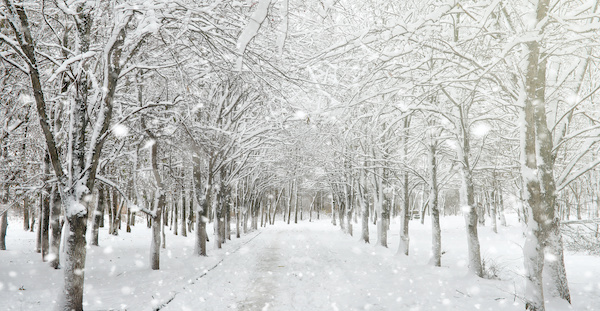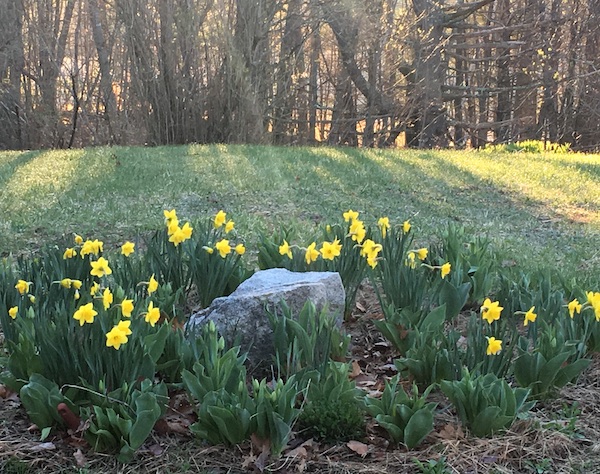Guest post by Dora Anne Mills, MD, MPH, FAAP

Last Friday was a snow day, with everyone on Zoom and staying home as much as possible. It was a good reminder of how we know how to adjust our lives for a snowstorm. We need to view COVID surges similarly. We need to adjust our lives so that all of us endure the surge storm as safely as possible.
Just as snowstorms often bring their own features, such as mixing freezing rain or wind, COVID surges have their own characteristics, based on the variant that is causing it. With the Omicron storm, three characteristics stand out.
COVID demand on healthcare
First, is the demand on healthcare. This cannot be overstated. Health care providers’ phones are ringing off the hook with people asking questions about COVID and wanting to be tested. Maine and other states are seeing record numbers of people hospitalized due to COVID.
Much has been made about Omicron being less severe. So far, European countries (e.g. the UK and Denmark) have seen large numbers of people hospitalized, even approaching that of last winter’s surge, but only modest increases in those who need an ICU. However, in the U.S., in places like New York State, ICU admissions due to COVID have exceeded last winter’s peak. In Maine, our ICUs remain at or near record levels. However, we can also assume many if not most in Maine’s ICUs with COVID have the Delta variant, given that for the most part, their illnesses would have been contracted at least two to three weeks ago, when Delta was more prevalent.
While there has been much made about Omicron being milder, including causing more people to be admitted “with” COVID rather than “for” COVID, the impact COVID is exerting is still massive. Yes, a small minority of people are admitted and found to coincidentally have COVID. However, they still need to be isolated, and they often develop symptoms and subsequently need to be treated for COVID.
Healthcare workforce shortage
Second, is the acute exacerbation of the healthcare workforce shortage. With Omicron’s high transmissibility and power to cause infection among the vaccinated (though the vaccines are still preventing hospitalizations and severe disease), healthcare and many other industries are seeing sizable absences due to illness. Some preliminary recent data from here in Maine and elsewhere indicates that on any given day, 1 – 5% of the workforce is out because of COVID. These absences are impacting healthcare as well as every other industry – e.g., schools, airlines, banking.
Medication supplies
Third, is the dwindling supply of medications to treat people with COVID, especially outpatients, to help keep people out of the hospital. Monoclonal antibodies have been the mainstay of this approach. One dose of these injectable medications administered within 10 days of the onset of symptoms (the earlier the better) reduces the chances of hospitalization in high-risk people by about 80 – 90%. However, two of the three available monoclonal antibodies do not work against Omicron. As of Friday evening, the Maine CDC determined there is enough Omicron in Maine that we should focus on using only one of these monoclonal antibodies, a medication called Sotrovimab, that is effective against this variant. Several private labs in Maine have found with screening tests that the incidence of Omicron is quite high. MaineHealth’s own NorDx Lab has seen rates of 78% and higher the last week on unofficial screening tests, including among samples taken from rural Maine.
The problem? There is very little Sotrovimab in the country. Maine received a total of 144 doses for this week. The highly-touted effective oral antiviral medication, Paxlovid, is also in extremely short supply, with about 260 courses distributed to Maine last week, with no new supplies expected soon.
These doses are a drop in the bucket compared with the over 10,000 Mainers reported with COVID the last week. Although many diagnosed with COVID are not high-risk enough to warrant these medications, Maine has disproportionately high numbers of people with risk factors making them eligible. For instance, Maine has the highest proportion of people 65 and older. Maine has one of the highest cancer rates in the country, many of whom are immunocompromised. And Maine’s rural areas have large pockets of unvaccinated people.
A recent study showed that Remdesivir, an intravenous medication given to hospitalized patients with COVID, is effective with outpatients in reducing hospitalization. That may be helpful, but this medication is also in short supply, and it must be administered intravenously every day for three days, starting within seven days of the onset of symptoms. Some feel the medication should be saved for those who are hospitalized, especially since the numbers of people at-risk for hospitalization is very large by comparison, yet even If untreated, very few are likely to become severely ill.
We have also seen an uptick in nursing home outbreaks the last several weeks. Unfortunately, the medication used to prevent the spread of such outbreaks is one of the monoclonal antibodies no longer recommended against Omicron. The medications above (Sotrovimab, Paxlovid, Remdesivir) are not authorized for post-exposure prophylaxis – preventing disease In someone who is exposed.
A COVID forecast
Although the crystal balls of everyone tracking this disease is murky, one forecast is clear. We’re likely in for an Omicron snowstorm the next several weeks. With the triad of over-run health care, an acutely exacerbated workforce shortage, and a scarcity of treatments, this may be a blizzard.
Please be careful. Just as in a Maine snowstorm, we adjust our routine to assure safety. We stock up on food and supplies. We stay low, sometimes that means staying at home. We drive carefully and slowly with snow tires, or not at all. As with a snowstorm, a surge with COVID means turning the dials up on health and safety measures: vaccinate (including boosters and influenza vaccine); mask (preferably with a surgical mask or N95/KN95); distance; ventilate; and test.

The good news? No matter how severe the storm is, spring will come. Things will get better.

Leave A Comment